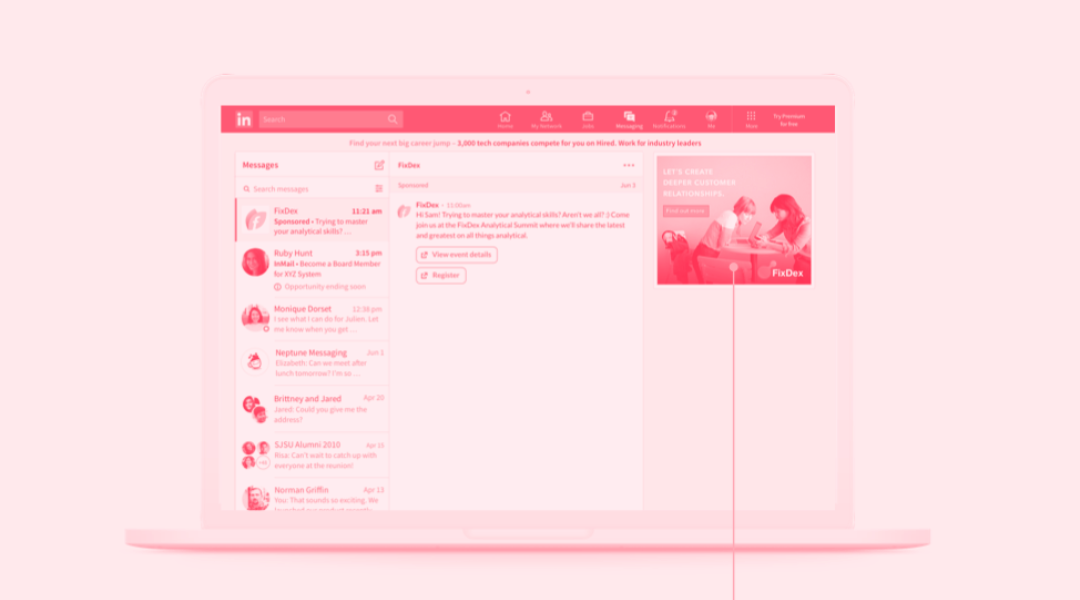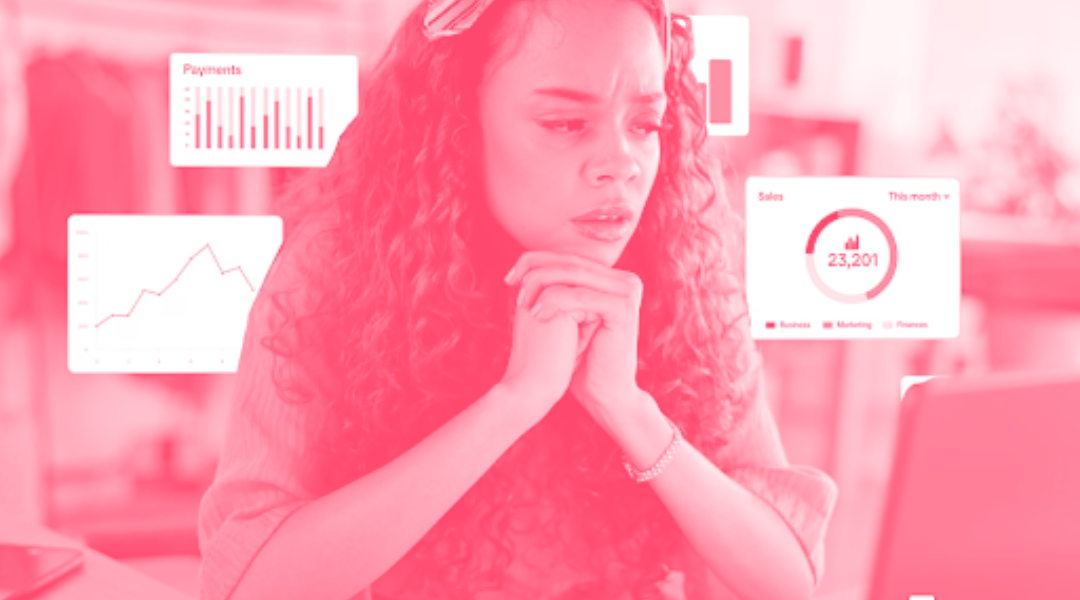Step by step to Linkedin Conversation Ads
In the world of digital marketing, the ability to make meaningful connections with your target audience is critical to the success of any campaign....
Plan, activate and control media to hit targets with precision.
Turn data into smart decisions with advanced analytics and modeling.
Efficiency, governance and scale for agencies and teams.
![[Ebook] SEO + AI: eBook to Master AI Overviews and GEO](https://www.adsmurai.com/hubfs/MKT%20-%202025/WEB/Resources%20-%20Banners/HeaderEN_Ebook_SEO+AI.png)
[Ebook] SEO + AI: eBook to Master AI Overviews and GEO
Learn how to structure and distribute your content so generative models can understand it, trust it, and reuse it in their answers. A practical guide to compete and appear in AI Overviews and AI-powered assistants.
Discover more
Today's most innovative companies think of their customers first, and that thinking leads them to deliver the right message to the right person at the right time. This is made possible through the use of data.
Companies are increasingly asking themselves how and when to use this data for online personalisation. Personalised advertising has immense value and people increasingly like to receive personalized advertising impulses.
One example of online personalisation is Facebook Lead Ads. Form ads are very valuable for businesses. They are a way to obtain accurate contact information to follow up with a potential customer. Keeping this information up to date in the CRM will allow Facebook to better optimise ads to quality leads.
TABLE OF CONTENTS
As we introduced in the previous section, Facebook Lead Ads is one of the ad formats available in Facebook Ads campaigns. As the name suggests, its aim is to capture leads and offer people a quick and secure way to sign up to receive information from your business.
The interesting thing about the Facebook Lead Ads format is that being within the Facebook environment, it has a lower abandonment rate, as it requires less friction and it is important to try to minimise the friction that can be generated.
When you start an advertising strategy on Facebook you will always have to choose an advertising objective and an optimisation, i.e. you have to tell the advertising algorithm which event has to happen in order to consider that the objective has been met.
Until now the optimisation by which the Lead Ads format worked was always the volume of completed leads. The success of a campaign was generated when the person completed the lead and that information was taken by the algorithm through the CRM.
Now you will also be able to optimise the final conversion that you indicate in the CRM to the algorithm. The algorithm will better understand what is working and what is not, and will be able to optimise better.
Simplification of CRM integration.
Possibility to have integration support, this support is from Facebook to Adsmurai. We have internal integration teams to help us make this journey easier.
Previously, a person would fill out a Lead Ad form. That information would go into the CRM and the lead would be contacted and its validity and usefulness would be rated. With this integration, what it allows is to introduce a two-way flow. A back and forth between the two platforms (Facebook Ads and the algorithm) so that this information that happens in the CRM can be fed back into the algorithm and work on this optimisation to improve results.
The more quantity and quality of signals we give back to the advertising platform, the better it will optimise the campaigns in order to guarantee a better overall campaign result.
Dynamic ads offer personalisation of products according to the interests of each user. Automation allows you to reach these users without having to spend an unattainable amount of time. Using dynamic ads, any brand is able to segment those people who have been on your website or app and offer them exclusively the products they have seen or are most interested in.
To take the performance of your lead ads a step further, you can share the data collected by your CRM on these leads with Facebook. This will unlock Facebook's optimisation of quality leads and your quality leads will receive more personalised ads.
How can you share this data? Here are 3 easy steps:
Create or choose a Facebook pixel that allows you to see CRM events from your funnel.
Connect your CRM to the Conversions API so your CRM can share events with your pixel.
Define your sales funnel so Facebook can optimise your ads.
Conversions API (CAPI) makes a direct connection between the client's marketing data and Facebook's system to optimise where to target ads, reduce costs and measure results. It is a direct connection between the client's server and Facebook's server.
CAPI is a tool that allows us to send key signals from the servers and then optimise them. It is mainly used for those signals that the pixel is not able to capture. Major changes in the industry mean that pixels are losing power and, little by little, the CAPI conversion part is gaining volume.
Types of signals for CAPI Online
Types of signals for CAPI Offline
phone calls
qualified leads
registrations and purchases
The tracking of web signals is one of the first things to consider in a digital strategy, not in a winning strategy, but in a medium-term subsistence strategy.
The usual user conversion path begins when the consumer goes to our website, executes the pixel that collects data from the browser and sends it directly to Facebook with the different events to be able to use the advertising campaigns.
The problem we have is that the reliability of browsers is not guaranteed in the medium or long term. Most third-party tracking systems such as the Facebook pixel rely on 3rd party cookies to track user activity. When these 3rd party cookies are no longer sent, it will be considered that more than 85% of browsers do not send these cookies by default.
Not being able to track user activity with a pixel will mean:
Optimising a conversion campaign or optimising it for link clicks implies an additional cost of around 200%. This means that if we cannot measure with the pixel, our campaigns will lose a lot of profitability because of this extra cost. Obviously, as we don't want this to happen, the solution is to integrate the Conversions API to your CRM, which will allow us to send the events directly from the server.
The other case in which the integration of CAPI is also very relevant is that of offline signals (those actions that occur outside our website and that are relevant to our business and digital strategy). The solution also involves integrating these signals through CAPI in order to get the most out of the campaigns.
Need more reasons to implement Conversions API? Once integrated, it will allow us to unlock the conversion lead and optimisation goal. Also optimise campaigns by business objectives and not by marketing objectives, therefore, we will be able to improve the conversion rate and ROAS, and reduce the CPA. If we manage to automate the whole process we will be able to fine-tune the investment much more.
How well do questionnaires with more than 4 questions work, does it not decrease the percentage of conversions leads?
There is no exact measurement on how many questions can decrease the conversion rate, but what we have to keep in mind is to ask as few questions as possible and to make it as easy as possible for people to answer.
A good option is to make a test, you can make a test on the platform and put two types of forms (with different number/type of questions). What you have to take into account is that eliminating friction will help us a lot to have a number of leads to optimise, if after obtaining the lead we are going to have a conversation in which we can ask for additional data, perhaps we take advantage of the first communication to ask as few questions as possible so as not to generate friction.
The recommendations for education are aligned to the general performance recommendations, let's use as many placements as possible, let's generate our creatives with the mobile phone in mind. The reality is that almost all or most of the journey is done on the mobile phone.
An additional thing that often works well in the education sector is to work out a complete funnel structure. Deciding on a university degree, enrolling in a course or postgraduate course is something that is not immediate, don't just focus on the lead part, but how, for example, a branding campaign can make us known so that when we propose to the person that they leave us their details to get to know them a little better, they are much more willing to leave us that information.
Advertising and the industry have come a long way, and the technical setup is becoming more and more important for the mechanisms to work. One recommendation is that automating all processes will help us to get the most out of lead conversion.
No, they will not change. For the digital marketer there is no change. What we need to change is the protocol for sending data, but the information that is sent and how it is registered is the same.
Real estate has advertising products specifically for this industry, where you can enter your entire catalogue of properties and optimise with some particular ones that are designed for that industry. So one recommendation is to find out these products that are specifically designed for the vertical.
The restrictions imposed by iOS 14 are not circumventable. When Apple proposes a landscape, all platforms have to comply. Using Lead Ads is a great way to mitigate the iOs 14 issue. Integrating API conversions allows us to send all those signals that we can send. Right now if we only have Pixel we are not sending them, if we manage to integrate offline and online API conversion we will give more signals to the system so that it works better and we will get the wheel to optimise much better.
It works exactly the same, the API conversions system sends the signals to the pixel container, what is important is that there is a good correlation between the signals we send in pixel, CAPI and the catalogue, so that the identifiers are the same. It is important to collect the right events for each vertical so that we can optimise the actual target we want to optimise. The integration does not impact the use of the product.
Ideally, both solutions should coexist. Facebook's tools are very powerful and allow us to duplicate signals. It is important that, at least for now, we keep both signals sending duplication parameters in order to capture as many signals as possible and maximise results. What does the Conversions API offer compared to the Facebook Pixel?
More reliable and sophisticated data,
Improved measurement capabilities
Enables more effective retargeting and custom audiences.
More reliable data because you will maximise the reliability of the data you collect.
Reduce costs between actions.
Typically you will be working with dynamic ad campaigns. Make sure you have the maximum match rate between the catalogues you have uploaded and the visibility you have on the platform. That is to say, that all the products we have on our website are loaded in the DPA product so that they can be matched and optimised.
It's similar to what happens with the education sector. These are verticals where having a full funnel strategy can make all the difference. Often what happens with this type of structure is that people need to know what we are doing in order to make up their minds. Something that works well is to use video playback campaigns in which we can tell about the work and what the organisation does, and those audiences that are generated from watching videos can be used as a form of retargeting so that they complete a form and are then contacted.

In the world of digital marketing, the ability to make meaningful connections with your target audience is critical to the success of any campaign....

In the world of digital marketing, video advertising has become a powerful tool to captivate audiences and boost the visibility of products and...

TikTok has established itself as a powerful marketing platform, especially among young and engaged audiences. With more than one billion monthly...